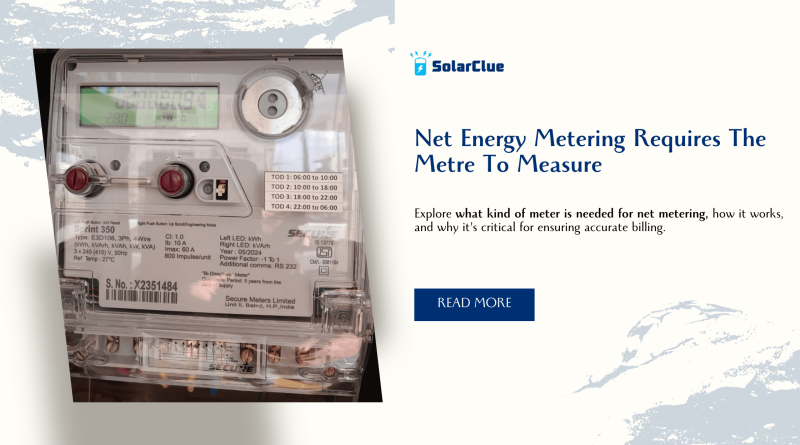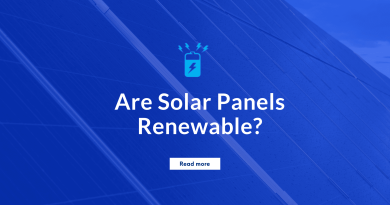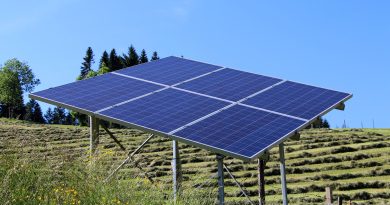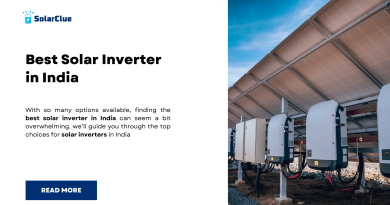Net Energy Metering Requires The Metre To Measure
Net Energy Metering (NEM)is one of the most popular billing mechanisms for solar energy users. It allows homeowners and businesses to generate their own electricity using solar panels and send any surplus power back to the grid. The key feature of net energy metering is that it credits solar energy users for the excess electricity they produce, allowing them to offset future electricity consumption.
However, to take full advantage of net energy metering, a special type of meter is required to measure both the energy consumed from the grid and the energy exported to the grid. In this blog, we’ll explain what kind of meter is needed for net metering, how it works, and why it’s critical for ensuring accurate billing.
Table of Contents
- 1 What is Net Energy Metering?
What is Net Energy Metering?
Net Energy Metering (NEM) is a system that allows solar energy users to export excess electricity generated by their solar panels to the grid and receive credits for it. When the solar system generates more electricity than is being used in the home or business (typically during peak sunlight hours), the extra energy flows back to the grid. Later, when the solar panels aren’t producing enough electricity (like during the night or cloudy days), users can draw power from the grid, and the credits they’ve earned will offset the energy they consume.
The key to this system working smoothly is the accurate measurement of both the energy consumed from the grid and the energy exported to the grid. This requires a specialized meter, known as a bi-directional meter.
What Kind of Meter is Required for Net Energy Metering?
A bi-directional meter (also called a net meter) is the type of meter required for net energy metering. This special meter can measure electricity flow in two directions:
1. Energy imported from the grid (when solar power isn’t sufficient).
2. Energy exported to the grid (when the solar system produces more than is consumed).
Features of a Bi-Directional Meter:
Tracks both consumption and export: Unlike traditional meters, which only track the amount of electricity consumed, a bi-directional meter records both the electricity you import from the grid and the electricity you export to the grid.
Measures in kilowatt-hours (kWh): The meter measures electricity in kilowatt-hours, ensuring that both the energy you use and the energy you send back to the grid are recorded accurately.
Real-time tracking: Many bi-directional meters allow for real-time monitoring, so you can see exactly how much electricity your solar panels are producing, how much is being consumed, and how much is being exported to the grid.
How Does the Bi-Directional Meter Work?
A bi-directional meter measures the flow of electricity in both directions, ensuring that both your grid consumption and solar energy export are tracked. Here’s how it works step by step:
1. Daytime Solar Production (Export)
- During the day, your solar panels typically produce more electricity than you can immediately use, especially when your energy needs are low.
- The excess electricity is sent back to the grid, and your bi-directional meter measures the amount of electricity exported. This energy is credited to your account and will offset your electricity bill.
2. Nighttime or Cloudy Days (Import)
- When your solar system is not generating enough electricity (such as at night or on cloudy days), you’ll need to draw electricity from the grid.
- The bi-directional meter tracks the electricity you import from the grid, which is charged at the standard retail rate.
3. Net Billing
- At the end of your billing cycle, the utility company uses the meter readings to calculate your net consumption by subtracting the energy you exported from the energy you imported.
- If you exported more energy than you imported, you may receive credits that can be used in future billing cycles.
- If you consumed more energy than you exported, you will pay for the net energy used.
Types of Meters Used in Net Energy Metering
In net energy metering, the type of meter you use plays a crucial role in how your energy generation and consumption are tracked. Here are the types of meters typically used:
1. Bi-Directional (Net) Meter
- As explained above, the bi-directional meter tracks both electricity consumption from the grid and electricity sent back to the grid.
- It provides real-time tracking of energy import and export, ensuring that you only pay for the net energy you consume.
- This meter is essential for any solar system connected to the grid under a net metering arrangement.
2. Smart Meter
- A smart meter is a more advanced version of the bi-directional meter. It not only tracks the energy flow in both directions but also provides real-time data to both the user and the utility company.
- Smart meters are connected to the internet, allowing users to monitor their energy consumption and export through mobile apps or online platforms.
- Smart meters also support Time of Use (TOU) tariffs, which allow you to take advantage of varying electricity rates depending on the time of day.
3. Traditional (Single-Directional) Meter
- A traditional meter only tracks the electricity you consume from the grid. This type of meter cannot measure the electricity you export to the grid, which makes it unsuitable for net metering.
- If you’re installing a solar system, your utility company will need to replace your traditional meter with a bi-directional or smart meter to enable net metering.
Why is the Bi-Directional Meter Important?
The bi-directional meter is essential for net metering because it ensures accurate billing and transparency. Here are some reasons why the bi-directional meter is critical:
Accurate Tracking: Without a bi-directional meter, it’s impossible to accurately track how much electricity you’re sending to the grid and how much you’re consuming from it. This could result in incorrect billing and lost savings.
Fair Compensation: The bi-directional meter ensures that you are fairly compensated for the excess energy you export to the grid. Without it, there’s no way to measure the energy flow to the grid, making it impossible for utilities to credit your account.
Grid Stability: By measuring how much solar energy is being exported back to the grid, utility companies can better manage energy flow, ensuring the grid remains stable and reliable.
Maximizing Savings: A bi-directional meter allows you to track your energy export and consumption in real time, helping you optimize your solar energy system and maximize your savings.
How to Get a Bi-Directional Meter for Net Energy Metering
If you’re installing a solar power system and want to benefit from net energy metering, you’ll need to contact your utility company to request the installation of a bi-directional meter. Here’s how the process usually works:
1. Submit an Application: Contact your local utility provider and submit an application for net metering. Your utility may have specific forms and requirements for this process.
2. Inspection: After your solar system is installed, the utility company may perform an inspection to ensure that your system complies with local regulations and safety standards.
3. Meter Installation: Once your application is approved, the utility will replace your existing meter with a bi-directional meter, or they may install a new meter alongside your current one, depending on the system configuration.
4. Monitoring: After the installation, you can start generating solar energy, exporting the excess to the grid, and monitoring your usage and credits through the bi-directional meter.
Conclusion
Net energy metering is an excellent way for solar energy users to reduce their electricity bills by earning credits for the excess power they produce. However, for net metering to work effectively, it’s essential to have the right equipment—specifically, a bi-directional meter that can measure both the energy you consume and the energy you export.
This meter ensures that solar users are accurately billed for their net energy usage, providing transparency and fair compensation for their contributions to the grid. If you’re considering installing a solar energy system, make sure to check with your utility company about upgrading to a bi-directional meter, as it’s a crucial component for taking advantage of net metering.
Ready to Save on Electricity Bills with Solar Power?
With Net Metering, you can drastically reduce your electricity costs by generating your own solar power and sending any excess back to the grid. It’s time to harness the sun’s energy and make a positive impact on both your wallet and the environment!
At SolarClue, we make the transition to solar simple, efficient, and affordable. Whether you’re a homeowner, business, or institution, our team of solar experts will guide you through the process—from installation to maintenance—so you can start saving from day one.
🌞 Take the first step towards energy independence today!
🔋 Get your solar consultation now!
Contact SolarClue or call us at +91-888-4444-830 to explore the best solar solutions for your home or business.
Go Solar. Save More. Power Your Future with SolarClue!
FAQs
1. Can I use my existing meter for net metering?
No, traditional meters cannot measure energy export to the grid. You’ll need a bi-directional or smart meter to participate in net energy metering.
2. Is a smart meter required for net metering?
No, a smart meter is not required, but it offers additional benefits like real-time monitoring. A bi-directional meter is sufficient for net metering.
3. How much does it cost to install a bi-directional meter?
The cost of installing a bi-directional meter varies by utility provider, but in many cases, the cost is covered by the utility as part of the solar installation process.
4. Do I need to replace my meter if I install solar panels?
Yes, if you’re using a traditional meter, it will need to be replaced with a bi-directional meter to measure both your energy consumption and export.
5. Can I track my solar energy production with a bi-directional meter?
Yes, a bi-directional meter tracks both energy consumption and export. Some advanced meters, like smart meters, also provide detailed real-time data through mobile apps or online portals.




